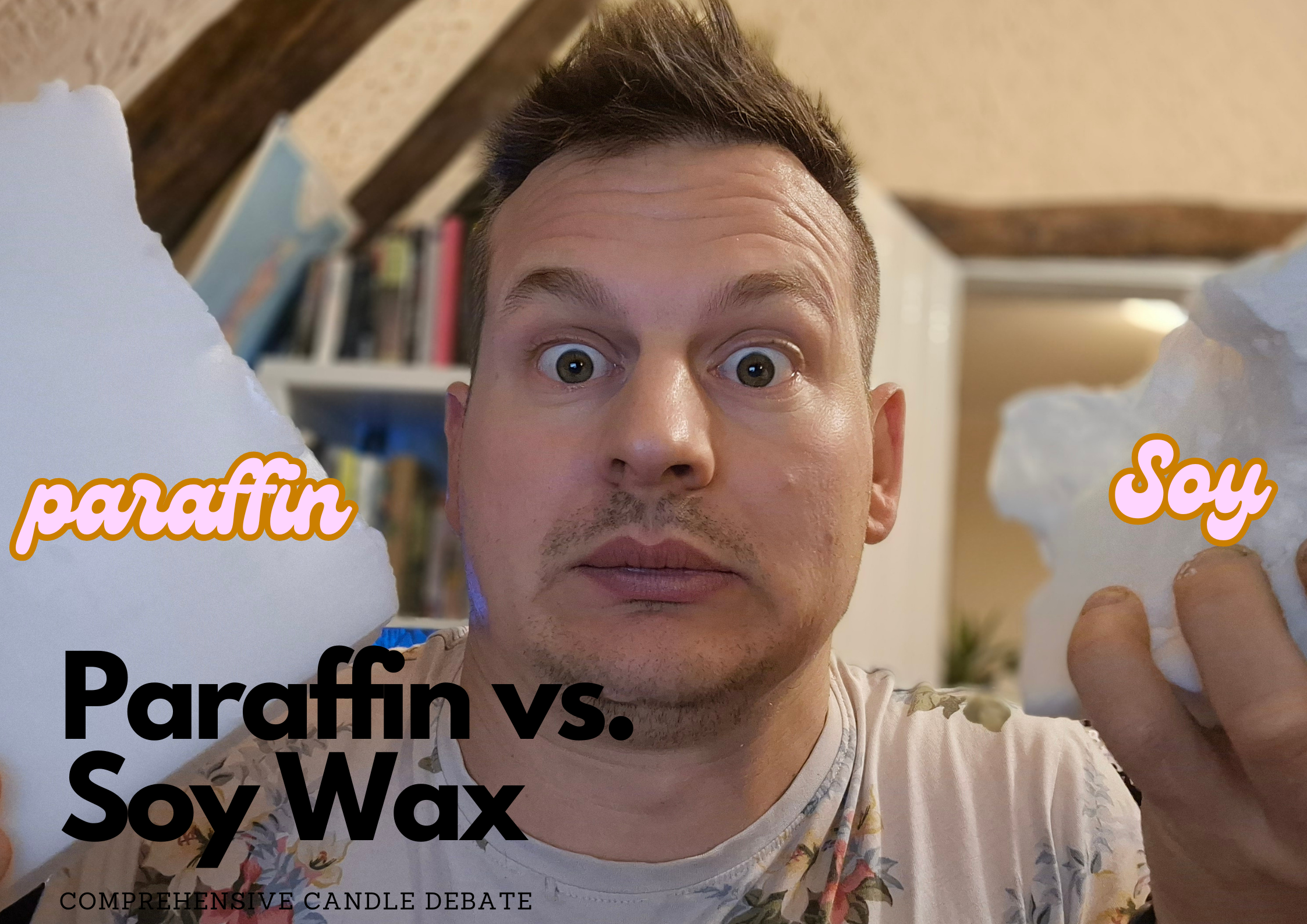Is Soy Wax Eco-Friendly And Sustainable? Let's find out the truth...
Jul 05 , 2022
In recent years, soy wax has become a popular choice for making eco-friendly candles. But what is soy wax, and is it really more sustainable than other types of wax?
Soy wax is made from the oil of soybeans. It’s a renewable resource, and it’s said to burn cleaner than other types of wax, like paraffin wax. Soy candles also last longer than paraffin candles, so you don’t have to replace them as often.
On the downside, soy wax can be more expensive than paraffin wax. And some people say that soybeans are a monocrop, meaning they require a lot of land to grow. Soybean farming can also lead to deforestation.
Why is soy wax becoming popular?
Soy wax is made from the oil of soybeans, which is extracted through a process of pressing and solvent extraction. The resulting material is then hydrogenated and refined to create a variety of different types of soy wax. While soy wax was originally developed as a cheaper alternative to beeswax, it has since become popular in its own right due to its wide range of uses and benefits. For example, soy wax is known for being more gentle on the skin than other types of waxes, making it ideal for use in body lotions and lip balms. In addition, soy wax candles are said to burn cleaner and slower than other types of candles, making them a more environmentally-friendly choice.
So, is soy wax eco-friendly and sustainable? It depends on who you ask. But if you’re looking for an environmentally friendly option, soy wax is definitely worth considering.
Is burning soy wax more eco-friendly than paraffin wax?

When it comes to candles, there are two main types of wax: paraffin and soy. Paraffin wax is made from petroleum, while soy wax is derived from soybeans. In recent years, soy wax has become increasingly popular, as many people believe it is more eco-friendly than paraffin wax. There are a few reasons for this. First of all, soybeans are a renewable resource, while petroleum is not. Additionally, soy wax burns cleaner than paraffin wax, producing less soot and chemicals. Finally, soy wax is biodegradable, meaning it will break down more quickly than paraffin wax if it is spilled or improperly disposed of. For all these reasons, burning soy wax candles is a more eco-friendly choice than burning paraffin candles.
Is soy wax biodegradable?
Most people are familiar with the benefits of soybeans. They are a healthy source of protein and can be used to make a variety of products, from tofu to biofuel. However, soy wax is another soy-based product that is often overlooked. Like other types of wax, soy wax can be used to make candles and polish furniture. However, soy wax has a number of unique properties that make it an environmentally friendly choice. For one thing, soy wax is biodegradable, meaning that it will break down naturally over time. In addition, soy wax is non-toxic and produces very little soot when burned. As a result, soy wax candles are a great way to enjoy the gentle light of candle without any of the harmful side effects.
Is soy wax toxic?
There is a lot of debate surrounding the safety of soy wax. Some people claim that it is toxic, while others say that it is perfectly safe. So, what is the truth?
To answer this question, we need to take a closer look at the ingredients in soy wax. Soy wax is made from soybean oil, which contains a compound called linoleic acid. This acid can be converted into linolenic acid, which is a known toxin. However, the human body does not convert linoleic acid into linolenic acid very efficiently, so the amount of toxic linolenic acid that is produced from soy wax is very low. In fact, it is believed that the amount of linolenic acid produced from soy wax is not enough to cause any harmful effects in humans or dogs.
So, while soy wax may not be completely safe, it appears that the risks are very low. If you are concerned about the safety of soy wax, you can always choose another type of wax for your candles or other products.
Impacts of increased soy bean consumption

Deforestation because of soy farming
Deforestation has become a major environmental concern in recent years. One of the leading causes of deforestation is soy production. Soybeans are a key ingredient in many processed foods, and demand for soy has been steadily increasing. In order to meet this demand, soy farmers have been clearing large tracts of forest land. This has had devastating consequences for the environment. Forests play a vital role in regulating the Earth's climate, and their loss has contributed to the rise in global temperatures. Moreover, deforestation has led to the loss of habitat for many animals, putting several species at risk of extinction. The impact of soy farming on the environment is clearly unsustainable, and it is essential that we find more sustainable ways of producing soybeans. otherwise, we will continue to see the loss of our forests at an alarming rate.
Greenhouse Gases as a result of soy growth
One of the main greenhouse gases emitted as a result of soy growth is nitrous oxide. This gas is produced when nitrogen fertilizers are used on soy crops. Nitrous oxide is a powerful greenhouse gas, and it contributes to climate change by trapping heat in the atmosphere. In addition to nitrous oxide, soy production also results in the release of carbon dioxide and methane. Both of these gases are also major contributors to climate change. As demand for soy grows, it's important to be aware of the impact that its production has on the environment.
Social impact of increasing soy growth
The social impact of increasing soy growth is both positive and negative. On the one hand, soybeans are a versatile and affordable source of protein that can be used to feed animals and humans alike. In addition, soybeans require less land and water to grow than other crops, making them more efficient to produce. As a result, increasing soy growth could help to address global hunger and reduce the environmental impact of agriculture. However, on the other hand, soybeans are often grown using harmful pesticides and herbicides. In addition, large-scale soy production can lead to deforestation, as rainforests are cleared to make room for soy plantations. As a result, any increase in soy growth must be carefully managed in order to minimize its negative impacts.
Soy wax is a great alternative to many waxes on the market, it definitely has its positives but with anything there are negatives, it has a great scent throw and a slow burning nature . There are many variations of soy wax, some mixed with other waxes such as coconut or paraffin. It’s worth testing different wax types and blends and seeing what works best for you!
FAQ: Is Soy Wax Eco-Friendly?
1. What is soy wax, and why is it considered eco-friendly?
- Soy wax is a natural, renewable resource made from soybean oil, making it eco-friendly. It's biodegradable, non-toxic, and sustainable.
2. How does soy wax compare to other candle wax options in terms of eco-friendliness?
- Soy wax is generally more eco-friendly than paraffin wax, which is derived from petroleum. Soy wax burns cleaner, produces fewer toxins, and has a lower carbon footprint.
3. Are soy wax candles safe for the environment?
- Yes, soy wax candles are safe for the environment. They don't emit harmful chemicals when burned and don't contribute to air pollution or greenhouse gas emissions.
4. Can soy wax be sourced sustainably?
- Yes, soybeans can be grown sustainably using responsible farming practices. Look for soy wax labeled as "non-GMO" and "sustainably sourced" for the most eco-friendly option.
5. Are there any environmental concerns associated with soy wax production?
- While soy wax is generally eco-friendly, there can be concerns if soy farming leads to deforestation or excessive pesticide use. Choose soy wax products from reputable sources committed to sustainability.
6. Are soy wax candles biodegradable?
- Yes, soy wax candles are biodegradable, which means they break down naturally and don't contribute to landfill waste.
7. Do soy wax candles have any advantages over other types of candles in terms of eco-friendliness?
- Soy wax candles tend to burn longer and cleaner than some other wax types, making them a more sustainable choice.
8. Are there any additives in soy wax candles that may impact their eco-friendliness?
- Some soy wax candles may contain fragrance oils and dyes. To maintain eco-friendliness, choose candles with natural, non-toxic fragrances and dyes or opt for unscented and uncolored options.
9. Can I recycle the containers used for soy wax candles?
- Yes, you can typically recycle glass or metal candle containers. Be sure to clean them thoroughly before recycling to avoid contamination.
Final thoughts





